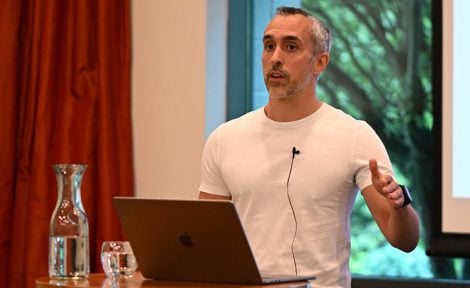BLOG: ‘People think AI can do conveyancing, but it’s way off that…’
Legal expert urges agents and conveyancers to let home movers know that AI is still along way off being able to replace professional judgement.

Artificial intelligence is reshaping how clients view professional services, and conveyancing is no exception.
With the increasing use of AI in everyday life, from online shopping recommendations to instant financial transactions, clients are starting to expect legal processes, such as conveyancing, to be just as fast.
The reality, however, is that while AI can support efficiency, it is not yet at a stage where it can replace professional judgment or guarantee absolute accuracy.
Rising expectations
Today’s clients are conditioned by technology to expect near-instant results.
They may struggle to understand why conveyancing still takes hours, days, or even weeks, when AI tools can produce answers in seconds. Managing those expectations is critical.
The role of the conveyancer remains central in explaining the complexity of property transactions – legal checks, compliance, risk management, and negotiation cannot be condensed into a few automated prompts. Clear communication about what AI can and cannot do will help prevent frustration and build trust.
Scrutiny
The legal sector has already witnessed a stark warning about over-reliance on AI. In a recent case, a UK law firm suffered losses after providing advice to a client based on an AI generated opinion which proved to be inaccurate.
This case makes it clear that lawyers cannot abdicate their professional responsibility to verify outputs, no matter how convincing they appear.
This case has sharpened the focus of professional indemnity insurers, who are now asking specific questions about how conveyancing firms use AI.
Underwriters want to know whether AI tools are deployed in sensitive areas of practice, how outputs are verified, and what safeguards are in place. Firms that fail to demonstrate robust risk management may face higher premiums – or, in extreme cases, reduced access to cover.
Right Role
AI certainly has a role to play, but at this stage it should be seen as a supportive tool rather than a replacement for legal expertise. Used wisely, AI can speed up manual and administrative tasks:
- Automating repetitive document collation.
- Streamlining ID verification and basic compliance checks.
- Assisting with initial client communication and FAQs.These applications reduce time on low-value, low-risk tasks, freeing conveyancers to focus on the higher-value, higher-risk work that demand professional scrutiny. Over the next five to ten years, as AI models mature and their outputs become more reliable, they may be trusted with more complex work. But for now, human oversight is essential to prevent costly mistakes.
Negligence
The challenge for firms is to balance innovation with accountability. AI should be adopted in ways that genuinely enhance client service without exposing the firm to unnecessary risk. That means:
- Setting clear policies on AI use across the business.
- Training staff to verify outputs rigorously.
- Communicating transparently with clients about where AI is used and where it is not.
- Documenting decisions so there is an audit trail if a claim ever arises.
Undeniable
The potential of AI in conveyancing is undeniable. It can reduce bottlenecks, enhance efficiency, and align with clients’ growing expectations for speed. But it must be applied cautiously, with professional responsibility and risk management at the forefront.
By being transparent with clients and proactive with insurers, conveyancers can harness AI’s benefits while safeguarding their practice against professional negligence.
Author bio: Matt Giles is a Director at RG Law.










